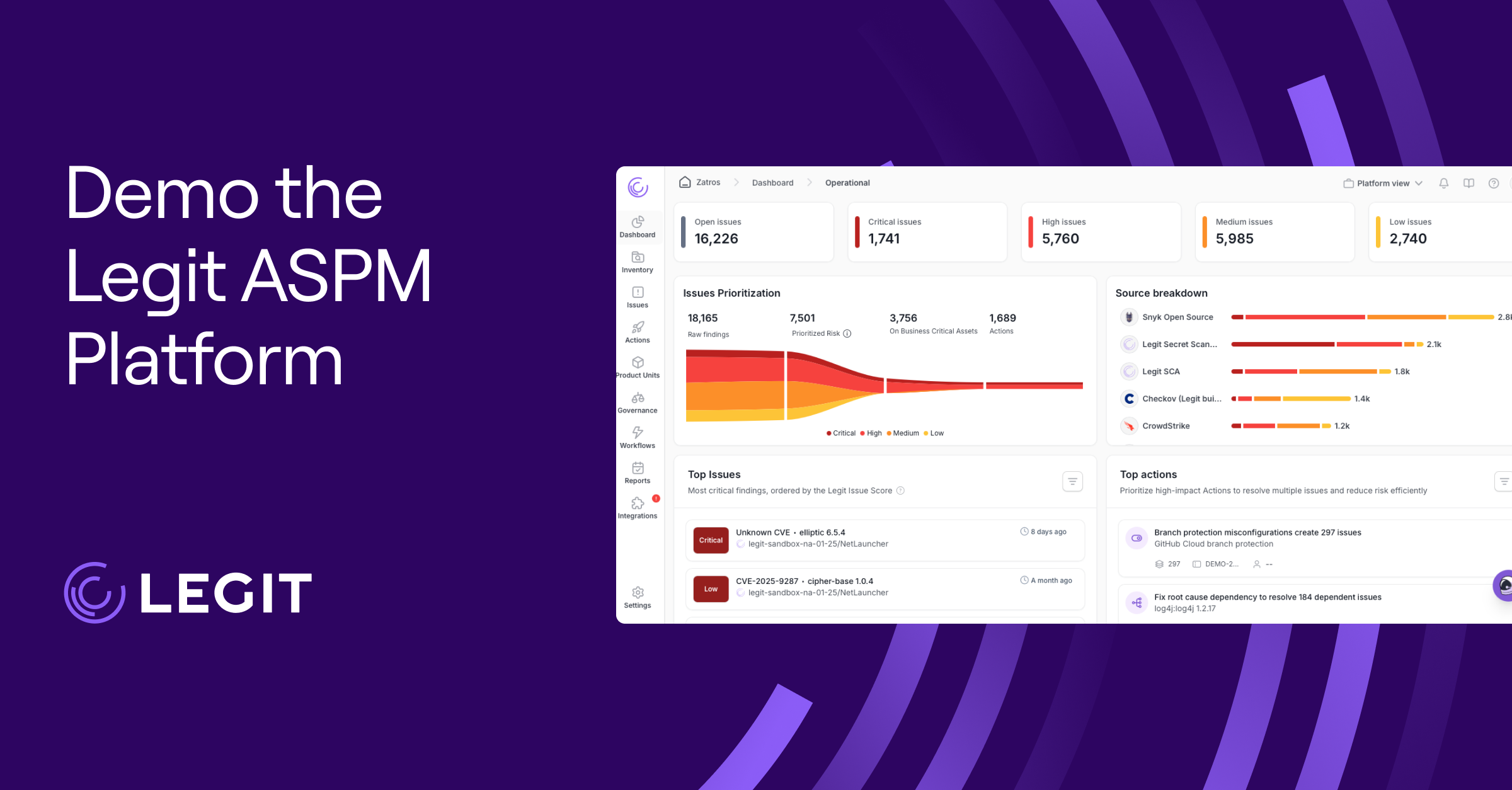Once vulnerabilities go public, exploits land quickly. Close that window with strong cybersecurity and disciplined vulnerability remediation that finds, prioritizes, and fixes issues across your tech stack.
Here’s a guide to vulnerability remediation, why it matters for risk reduction and compliance, and proven vulnerability management best practices you can apply immediately—from continuous monitoring to clear service level agreements (SLAs) and cross-team workflows. Build a practical plan to reduce time to remediate and strengthen your overall security posture.
What Is Vulnerability Remediation?
Vulnerability remediation refers to the process of finding a weakness, fixing it, and removing the attacker’s opportunity to take advantage of it. In practice, that can look like:
- Patching software
- Changing a risky configuration
- Rewriting fragile code
- Disabling a vulnerable service
- Retiring an asset
Think of remediation as the “apply the fix and shut the door” part of the broader vulnerability management lifecycle, where you identify and confirm the fix. In a mature vulnerability management program, teams choose one of three responses for each finding: remediate urgent items, mitigate where needed, or accept when it aligns with business objectives.
The goal of remediation is to remove the issue entirely, whether that’s through a patch or code rewrite. But it’s not the only process that should be in your workflow. Mitigation is a strategic safeguard used when a fix isn’t yet available or safe to deploy. That might mean restricting access, isolating affected systems, or implementing additional compensating security controls like a web application firewall. Well-designed programs use mitigation to reduce risk while buying time for a safe, permanent resolution.
The Importance of Vulnerability Remediation
Threat actors favor what already works: known vulnerabilities with available exploits. Security teams have to close those gaps quickly to reduce the attack surface, cut down on common entry points, and keep business moving.
Verizon’s 2025 Data Breach Investigations Report shows vulnerability exploitations are some of the most common initial attack vectors and account for about one in five breaches. Mandiant’s investigations echo that trend, finding that exploits were the most common initial intrusion vector.
Scale and speed raise the stakes. Thousands of new Common Vulnerabilities and Exposures (CVEs) appear each year, yet incident investigations routinely trace breaches back to older, already documented vulnerabilities that stayed open far too long. Many organizations also underinvest in patch management, even though closing known issues can prevent a large share of breaches. Put simply: prioritize based on real risk, move fast on high-impact vulnerabilities, and verify fixes so they stay closed.
The Vulnerability Remediation Process: How It Works
Many frameworks break vulnerability remediation into four high-level steps: find, prioritize, fix, and monitor. But in real-world programs, the process involves more nuance.
Let’s expand on that basic flow to include critical actions like planning, validation, and tracking metrics—because identifying a vulnerability is just the beginning.
1. Identification
Find the weaknesses first. Run the right mix of vulnerability scanning and tests for your stack, like application and dependency scans, configuration review, and penetration testing when you need a thorough view.
When a scan flags an issue such as an application vulnerability, verify the finding and move it into the queue so it doesn’t linger. A comprehensive vulnerability assessment should cover both automated scanning and manual testing for thorough coverage of potential weaknesses.
2. Prioritization
Fix what matters most, not just what vulnerability scoring systems like the Common Vulnerability Scoring System (CVSS) rate as high severity. If you’re wondering how to prioritize vulnerability remediation, start with a thorough risk assessment that considers exploitability and business impact, then factor in exposure, asset criticality, and what attackers are currently targeting.
With a risk-ranked list, you can assign owners and SLAs that match the stakes. Just keep in mind that you don’t need to fix everything. If a vulnerability doesn’t apply in your environments, or effective controls already reduce exposure, document the rationale and focus effort where risk is higher.
3. Planning
Set a target date, schedule maintenance windows, and align with change management and compliance requirements. Make sure your plan accounts for system dependencies so the fix lands cleanly without breaking adjacent services.
4. Remediation
When it comes time to remediate vulnerabilities, remove the risk at its source. Patch or upgrade, tighten risky configurations, disable exposed services, or retire the asset if that's the safest path. If a full fix isn’t available, use compensating controls and keep the item open until you can close it out.
5. Validation and Monitoring
Confirm that the remediation did what you intended, then watch for drift. Re-scan or re-test the affected assets, try to reproduce your original finding, and check that related services still behave as expected. Verify your success criteria—such as the scanner no longer flagging the issue—and make sure no new errors spike after rollout.
6. Documentation and Metrics
Record what changed, when, and why. Keep evidence for audits and track program health with metrics like time to remediate and closure rates on high-risk items. Use those insights to refine SLAs and workflows so the process gets faster and cleaner over time.
Vulnerability Remediation Best Practices
Turn a noisy backlog into measurable risk reduction with a simple plan. Prioritize by business impact, set timelines that stick, and keep ownership clear.
Here’s what that looks like day to day:
Prioritize by Business Risk, Not Volume
Triage on what attackers can use and what would hurt the most. Blend exploitability, real-world attacker activity, and business impact. Use sources like CISA’s Known Exploited Vulnerabilities (KEV) and current advisories to push truly dangerous items to the front of the line.
Set Clear Remediation Timelines and SLAs
Define target windows by risk and align them to policy and compliance needs. While some industry guides suggest timelines of 15–30 days, CISA's official directives apply only to KEVs for U.S. federal agencies, which require remediation within 14 days for new KEVs and six months for older ones. Most private-sector organizations adopt SLAs based on asset criticality, business impact, and exploitability.
Implement Continuous Monitoring Software
Keep discovery and verification on a consistent cadence. Run frequent scans, pipe results into your SIEM and ticketing, and watch for regression after changes. Weekly scanning is a good practice, and you should have a clear scanning scope so nothing slips through. Pair scanners with the right vulnerability management tools so findings move straight into your workflow.
Develop a Vulnerability Remediation Policy
Document how you find, validate, and report. Include patch management and change control, along with any documentation standards relevant to your company and industry. A clear policy removes guesswork and gives you audit-ready evidence.
Measure, Report, and Refine
Track time to remediate by severity, percentage closed within SLA, and reopen rate. When you share results with technical owners and other stakeholders, you empower every team to remove obstacles faster. Use these feedback loops to adjust SLAs and raise closure rates on high-risk issues over time.
Get Cross-Functional Buy-In and Clear Ownership
Make remediation a team effort. Spell out who discovers issues, deploys, and validates, and assign a program sponsor (for example, the CISO or VP of Engineering) to resolve conflicts and approve exceptions. Creating one coordination point of contact and a shared status channel helps updates reach the right teams. It’s also a good idea to keep a short playbook and revisit ownership whenever teams or services change.
Streamline Vulnerability Remediation With Legit Security
Legit Security gives you end-to-end visibility from code to cloud. Map repositories, pipelines, and runtime services so every vulnerable asset has a clear owner and context. Legit’s automated risk-based prioritization uses exploitability and active threat signals to push the right issues to the top with target timelines.
Legit fits into your DevSecOps workflows—no heavy lifting required. It opens tickets in your tracker, syncs status as work progresses, and enforces CI/CD guardrails so fixes land cleanly. Request a demo today.
Download our new whitepaper.


